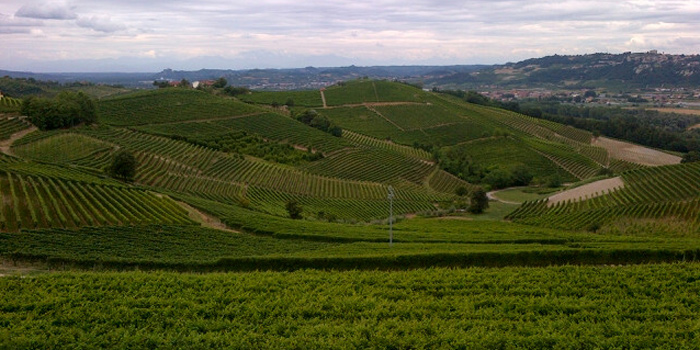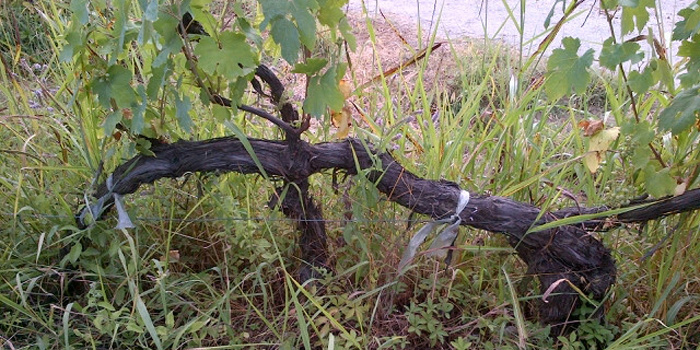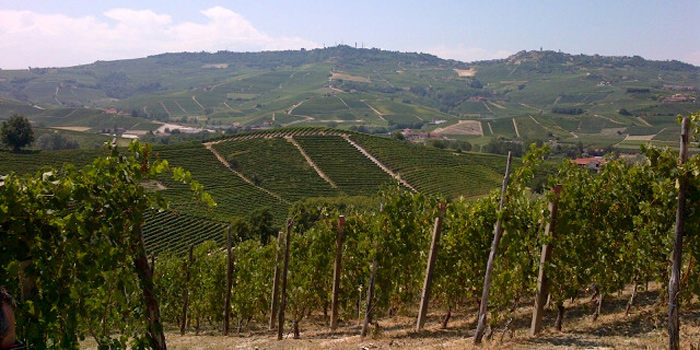A History of Piedmont
Author: Guest Blogger
Tuscany is often referred to as the Bordeaux of Italy. So Piedmont is surely comparative to Burgundy, at least according to the engaging personality of Chiara Boschis at E. Pira who says “we are all small artisan producers, rather like the Burgundians”.
This view is further supported when you consider that production of the indigenous Nebbiolo grape is made viable in Piedmont by the quality of the region’s soil, terroir, geographic location and topography – with many steep hillside locations affording the vines day-long access to the sun. A bedrock of blue marne and calcareous soils with sand on top is the secret to the success of the noble variety. The best vineyard sites tend to be at the top of very steep slopes giving them access to the richness of soil and water management as well as the crucial element of sunlight, which all facilitate ripening.
After the war, there were very limited exports from Italy and seeing as not many people spoke Piemontese, even when business started to improve the region struggled to take advantage. This meant that focus was placed on the volume of production, rather than quality, with high yields of fruit typically producing wines that showed lots of tannin and acidity. Historically, growers wouldn’t just concentrate their efforts to cultivating their vines either, they would often be involved with the farming of other crops such as hazelnuts and maze.
Many growers from Piedmont were therefore not really known as winemakers, and this is emphasised even further when you consider that they simply sold off their fruit to the local co-operative rather than bottling it themselves. Historically, this often led to the planting of Merlot and Cabernet Sauvignon vines too, as they tend to be easier to maintain and also had more established markets available at the time to realise an immediate return on investment and effectively allow the grower the opportunity to make a living. It was only recently that the next generation started to emerge with skilled winemakers such as Manuel Marinacci taking over land previously farmed by his grandparents and choosing to make wine in the traditional style (planting local varieties and using practices such as fermenting in concrete) as this is not only his passion, “but also the type of wine that he likes”.
This group of young, passionate and strong-willed producers have started a movement which is motivated by a goal to address the mistakes of those who took the wrong path. They tend to their vineyards with special care and aim to tell a story with their wine, something that was especially evident when we visited Lucca Roagna who told us that his “first objective is to make a good expression of terroir”. This is especially relevant as the man clearly takes an obvious interest in Burgundian wine considering the number of empty bottles found in his winery and his choice to bottle wines as not only vineyard specific Crus, but Vieilles Vignes (vine specific) too.
The welcoming, hospitable and generous Chiara Boschis at E. Pira was keen to stress that whilst the best vineyards often make the best wines (and that this is especially important in challenging vintages), the winemaker can influence whether the wine produced is a great one. Chiara is another proud traditionalist, but also advocates the use of technology, which is evident by the significant investment that has been made in her cantina, believing that this “offers winemakers more time and control, allowing them to spend more time in the vineyard affording their personality and character into their wines”. We were very impressed with her recent bottlings, as we were with many of the wines that we tasted during the week, and it was especially exciting to taste the first ever bottling of Berrys’ Own Selection Barolo at Fratelli Alessandria – a very welcome and excellent addition to our range of classical wines.
Piedmont is a region whose culture is held together by its wine, the personalities of the people, the food, and the joy of the lifestyle.






It’s quite amazing to see that much interest about Italian wines and to read so many detailed information pupping up from London day by day. There are so many incredible wines in Piedemont, lot of personality and unique texture. I hope avid ‘ll have chance to taste as much as possible but I wish him to have chance to talk to as many producers as possible because that will make a lot of difference.
Altare
Clerico
Roagna
G. Rinaldi
Bartolo Mascarello
Ettore Germano
Bruno Giacosa
Gaja
Chiara Boschis
Sandrone
Giacomo Conterno
Aldo Conterno
Barale
Vietti
Vajra
Massolino
Antoniolo
Le Piane
Sella
and many many other more. Piedemont is a spectacular mosaic of complexity and variety of soils, exposures, styles and vintages.
I can’t wait to read much more about Italy from you.
Would be possible to have the complete list of the estates will be attending the Septembers tasting?
Looking forward to hearing from you.
jovica
It’s great that Berry’s is helping to raise the profile of Piemonte. There is so much great wine in this region just waiting to be discovered.
Noel
http://www.piemonte-wines.com